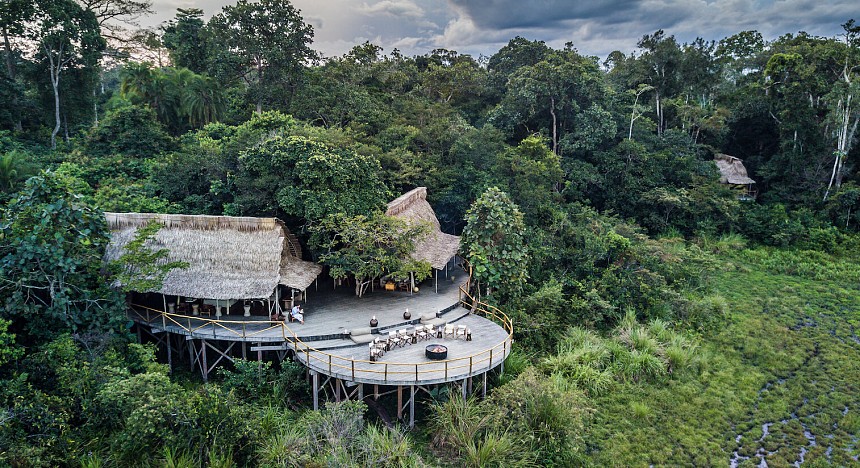A pair of bulbous eyes hover above the water. Blinking in thought. Eyeballing us. It’s a hippo. We stand still, crouched on a tiny island, 20 metres away. The silence is palpable. A buffalo stands to the right of us. We spot an elephant in the distance. We wait, watch. And then, with a flash of its silvery backside, the hippo’s gone, weaving its way through the glistening waters of Odzala-Kokoua National Park in Republic of Congo (RoC)
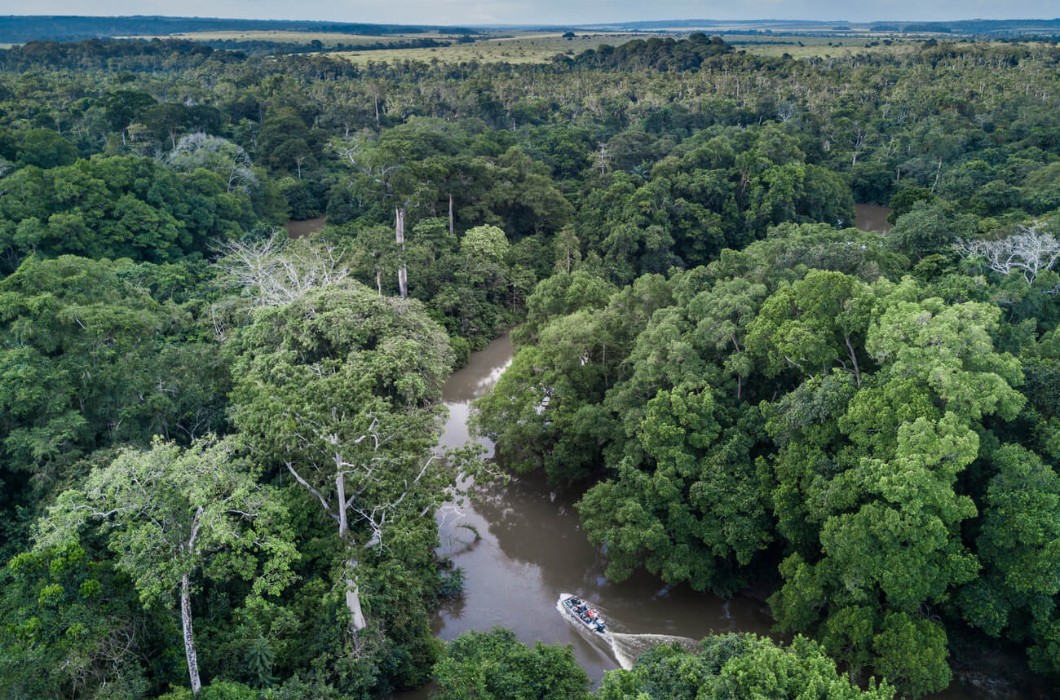
One of Africa’s oldest national parks, Odzala was crowned a UNESCO World Heritage Site in September 2023. Managed by conservation giants African Parks, it lies in the beating heart of the Congo Basin, the second largest rainforest in the world after the Amazon. And this huge expanse, a mosaic of savannah and rainforest, remains untouched, untrammelled – with the chance to see nature at its most raw.
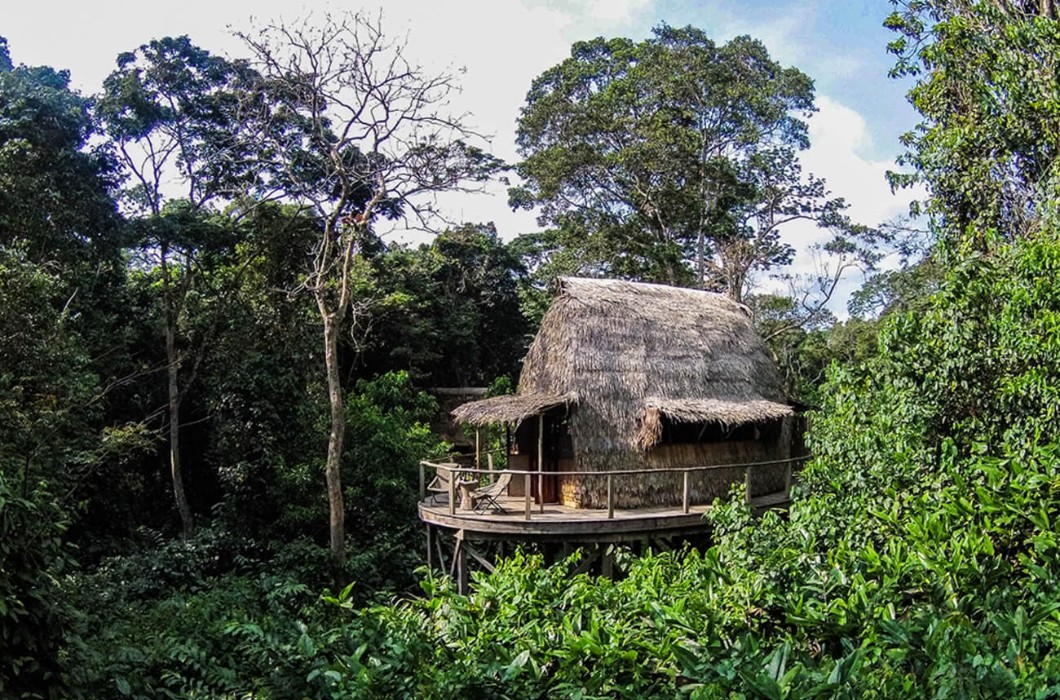
Odzala’s lack of exposure is largely due to the RoC often being confused with neighbouring country Democratic of Congo, whose volatility regularly hits the headlines. And, while you can spy Kinshasa from the RoC’s capital Brazzaville, it is separated by the mighty Congo River – and the country remains completely safe. Indeed, Brazzaville is a laidback and serene city, with tree-lined streets, charming pavement cafes and buzzy restaurants.
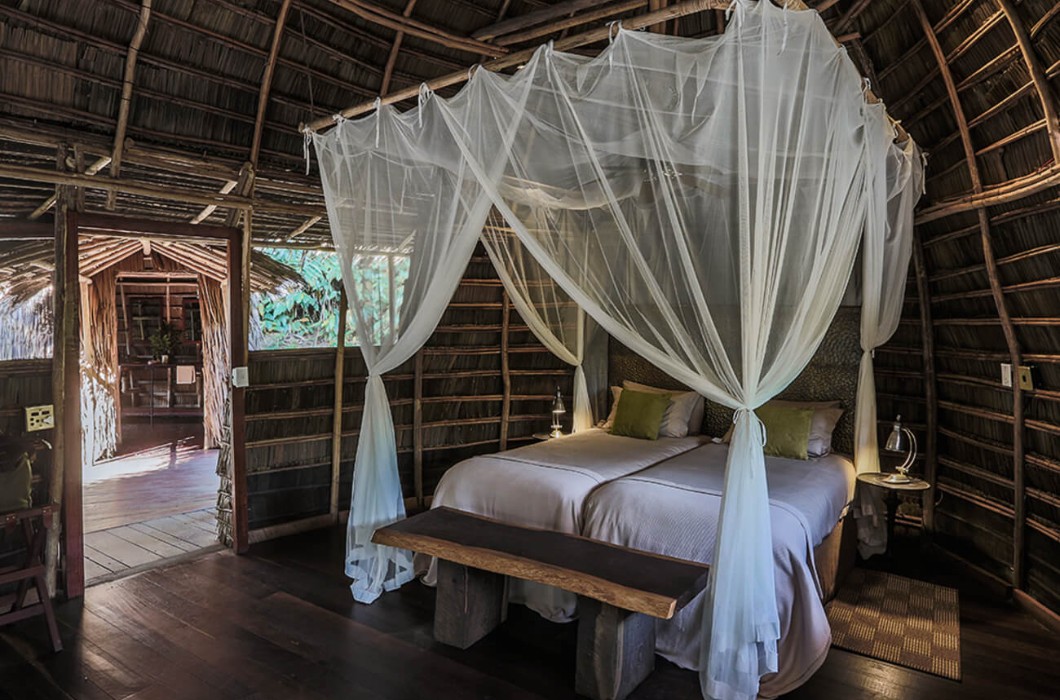
After a fascinating day exploring the capital, I fly into Odzala in a small plane. A one-and-a-half-hour journey, it’s an adventure in itself, following the snaking Congo River before a dense patchwork of forest unfurls beneath us. As we descend into a grassy clearing, I spot a herd of elephants before I am met by a flock of staff from Kamba Africa. Kamba Africa is the only private tour operator operating in Odzala, with three luxury lodges in the park.
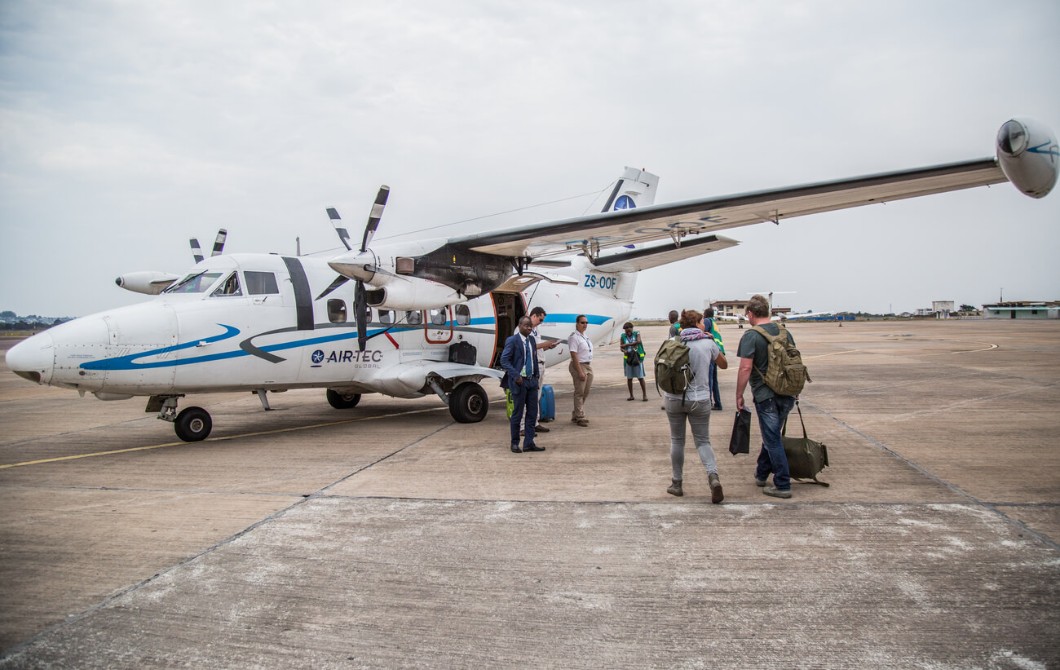
Founded by German philanthropist Sabine Plattner, the company creates viable, low impact eco-tourism ventures, providing support in conservation initiatives and local community development. Lodge manager Phalana greets me with a large smile. “It’s fifty shades of green here,” he says, leading us to a tin shed-turned-air hangar, where a table, lined with bottles, awaits. Sipping on a gin & tonic, I look out into the wilderness, glinting in the sun. It is, indeed, every hue of green. Even better, there’s no mass of safari vehicles. No radioing sightings. No rifles. No sign of man. Only 285 tourists visited the park last year – an astounding number compared to Kruger National Park’s 1.8 metre–plus.

There are 33 gorillas in this group. Gradually more appear, as we stay tucked behind huge leaves, utterly compelled
I meet my guide Pedro Lopes, 33, who, after a Pauline moment in a Zambian national park, left behind a career in the luxury industry to become a guide. We jump in the jeep and drive through the thick tangle of the Marantaceae forest to our base for the next two nights, Ngaga Camp. Home of primatologist Magdalena Bermejo, known as the “Dian Fossey of the Congo”, Kamba has six Congolese-style lodges here, decked out with canopied beds, and wraparound decks entrenched in the wild. At night, the cosy lantern-lit open-to-the-elements dining area plays host to feasts, cooked by Beninese chef Santos – on my first night, I enjoy a forest-plucked salad, followed by beef fillet then chocolate mousse.
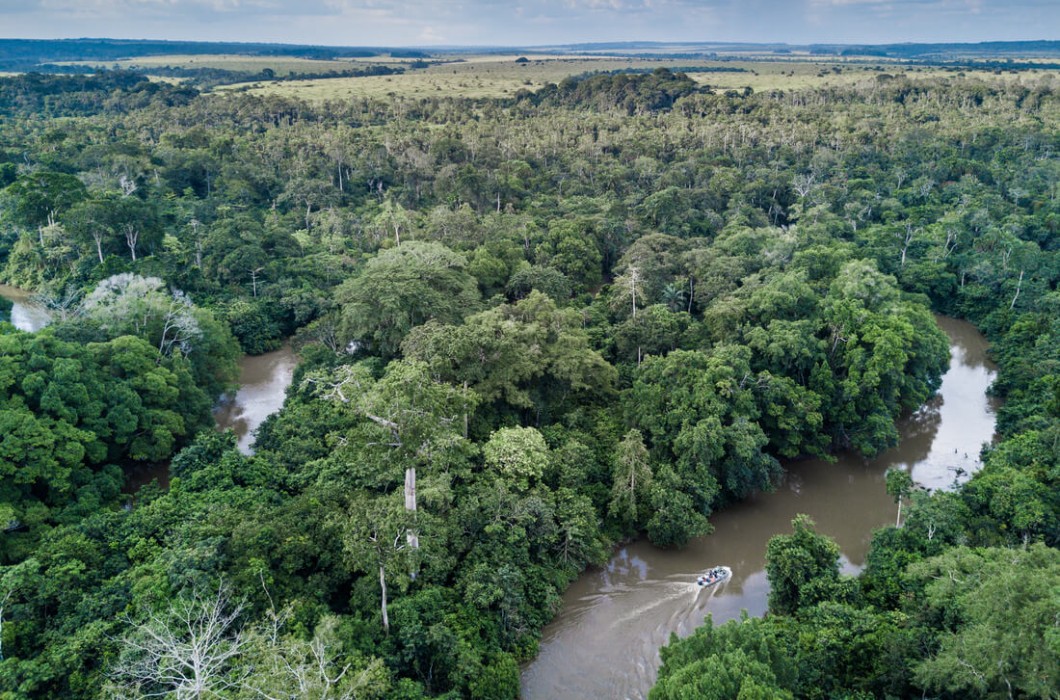
The next day, I wake at 4.30am in search of western lowland gorillas. Critically endangered yet thriving in this part of the Congo, they differ from their mountain gorilla cousins, with lighter and shorter hair and longer arms. This morning, we are tracking Neptune, one of three habituated groups (a process which takes five to seven years), out of the 58 gorilla groups here. But it’s not just tracking. Guests play a key part in Magda’s research, with the tracker reporting back to the scientist with any findings. “Nature is not just about animals and trees. We are part of it,” says Lopes.

We follow tracker Romaric Tango into the forest. He slashes our way through with a machete. After 20 minutes, he stops and smells the air, surveys some stripped plants on the ground. ‘Attente’, he says and darts off, balletic-like in his movements. Five minutes later, he reappears and gestures for us to be quiet. We tiptoe forward. Through the foliage, I see a mother and two infants, sitting calmly. Silverback Neptune roams past, keeping watch. There are 33 gorillas in this group. Gradually more appear, as we stay tucked behind huge leaves. We stay for half an hour – compelled – before returning to camp.

That afternoon, I sit down with Magda. Originally a child psychologist, she’s been in Congo for 30 years. This has included dealing with Ebola which killed 5,000 gorillas. But, undeterred, she relocated to Ngaga (Ebola couldn’t cross the swamp). I ask about the ambition behind her work. “Our research station is for the locals. We do this project together and it needs to be appropriate for them. Any biology students who come here, I tell them that it is important that their studies are done with the people who are living here.”
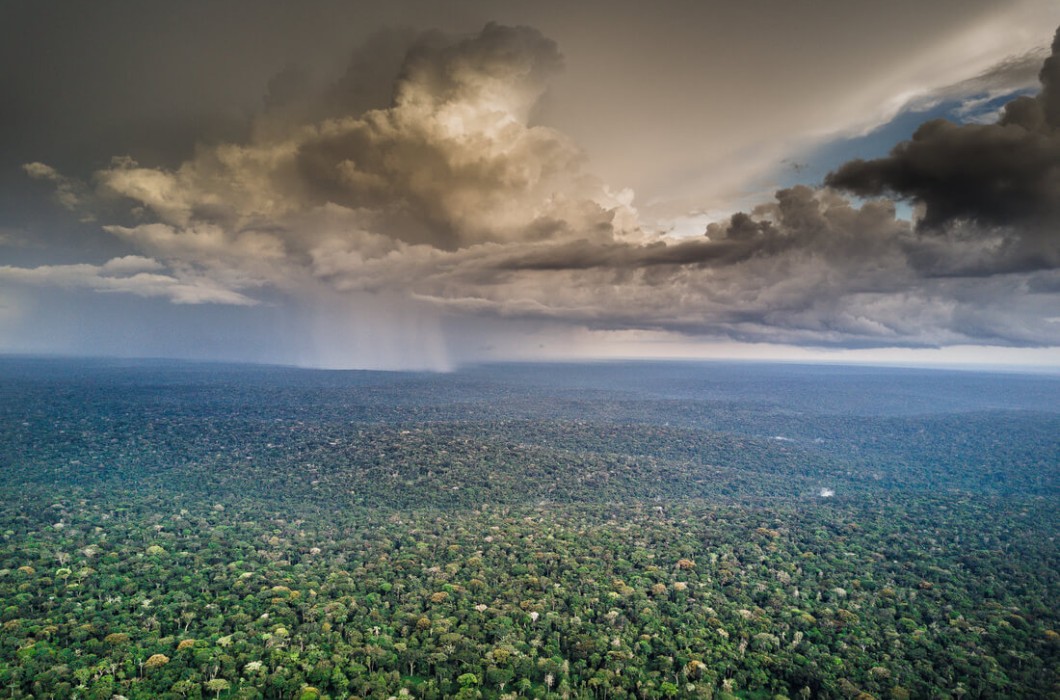
The following day, we head out with tracker Gabin Okele in search of Jupiter, another habituated group. We start in the dark. It’s more intrepid this time round, vaulting logs, skidding down banks, through marshes as the light begins to filter through the forest. “Did you hear that? We are close now,” says Lopes. I listen. A grunt. Okele continues to cut a way through, jabbing at the virgin vegetation with secateurs. After two hours, we spot the great apes in the trees – nibbling on fruit, the skin plummeting to the ground. A chest pummelling echoes from above before two gorillas swing their way down and start playing. The human-likeness is captivating.
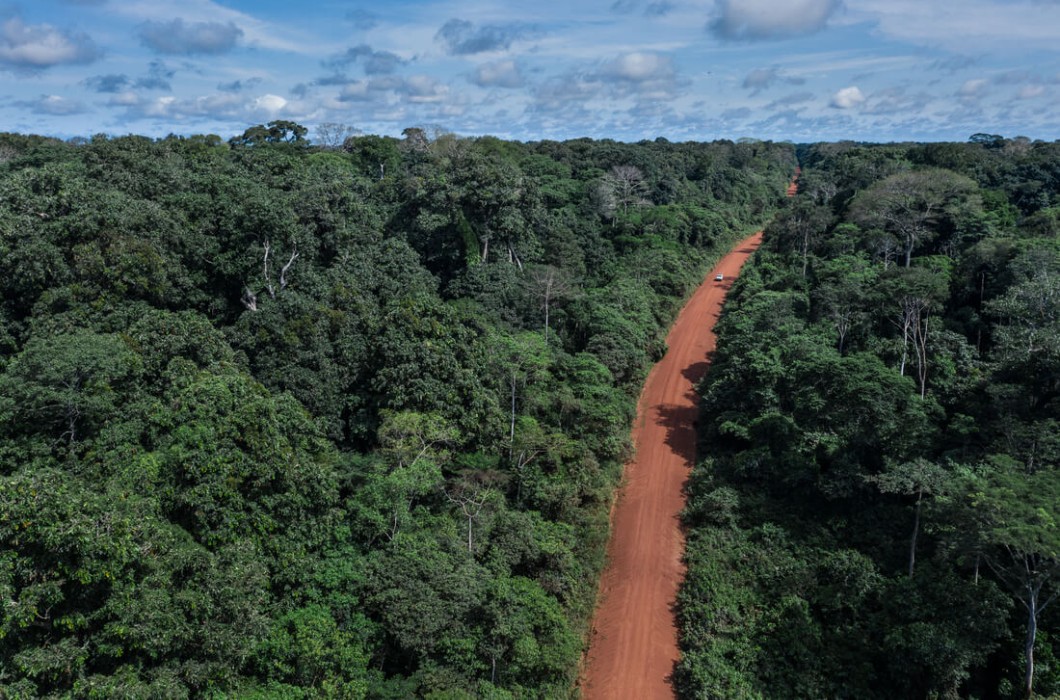
While gorillas are major players in this park – so are forest elephants, the subject of our next adventure. Lopes and I along with guide Andrew Hay, 26, drive to Kamba’s next camp Lango, overlooking Lango Bai. Bais are unique to the lowland of central Africa and a mecca for animals to graze. On our way, we pass the ‘forest people’, one holding a freshly-speared marsh mongoose under his arm, another balancing ebony logs upon his shoulders. The landscape changes from forest to savannah, with towering termite mounds and raffia palms (the largest leaves in the world). A Dwarf Buffalo wallows in the mud. Lopes saw a leopard here once.
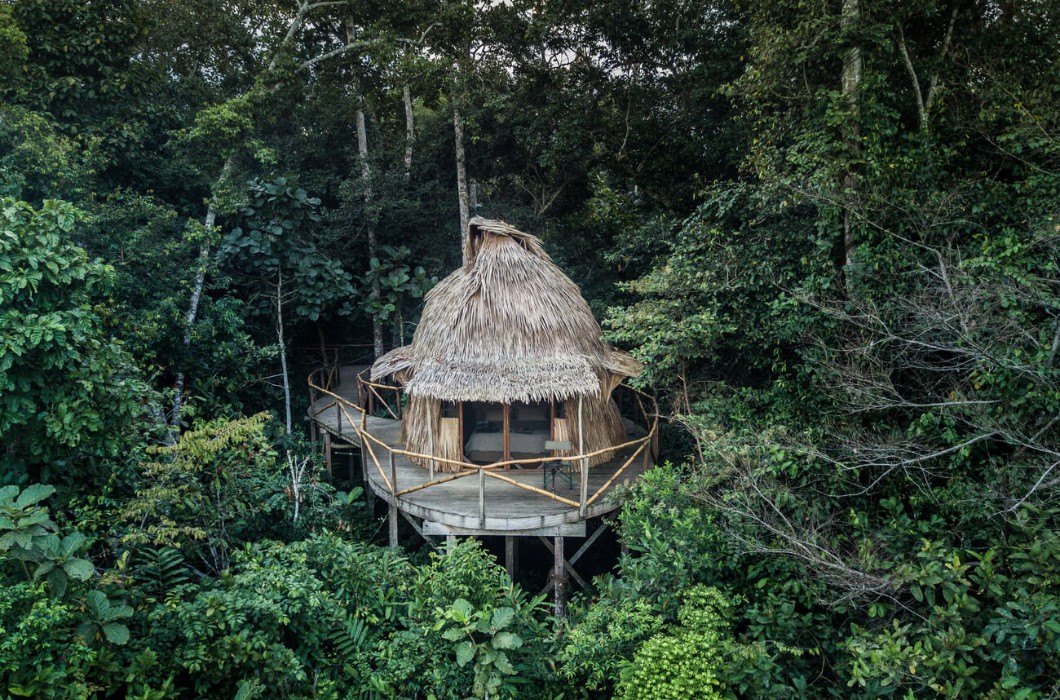
We disembark at a tiny papaya tree-lined jetty and set off in kayaks along the jungle-fringed Lekoli River. The peace is intense. The water so still, broken only by the occasional splash, as we are carried downstream. Sunshine glares upon the river, lighting up the electric green bush. As we come into land, a large bull forest elephant blocks our path. We dock onto a tiny strip of land and wait. Twenty minutes pass. But it seems like no time. Finally, the large creature lumbers off. We follow in its giant footsteps, wading thigh-high through muddy water across the bai to Lango Camp, scattering the silk cotton balls decorating the water as we go. A table-cum-bar and chairs await in the water, with a herd of buffaloes as the backdrop. I cool off with a sundowner before dinner of pork en croute then go to bed to the sound of trumpeting elephants.
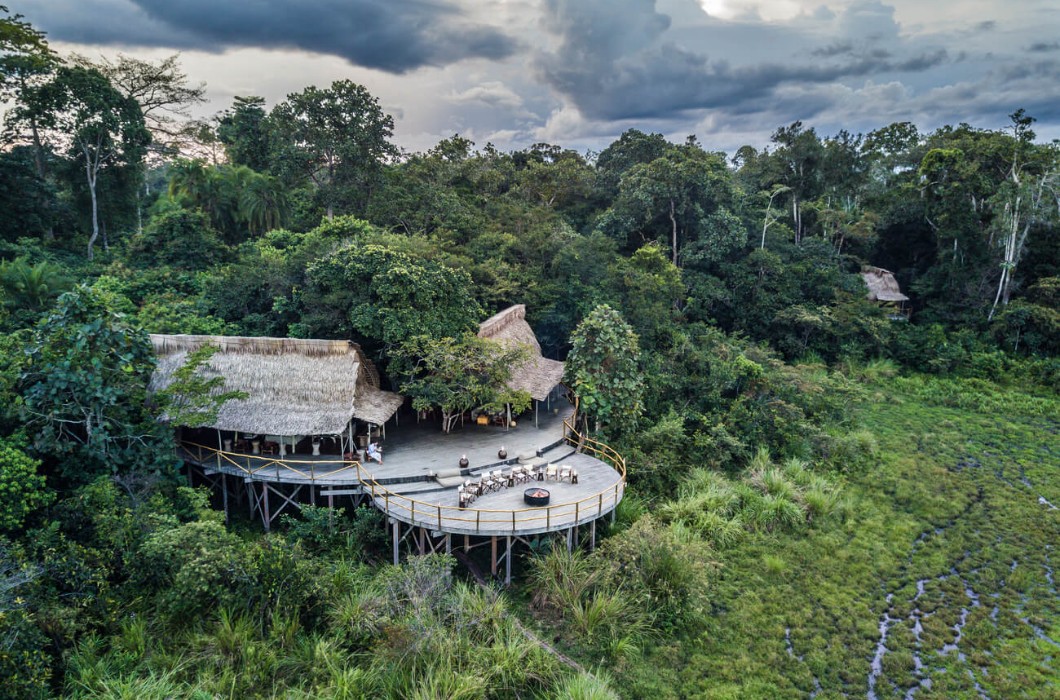
It is an early start. We make our way into the forest, walking along ‘elephant boulevards’, created from millennia of elephants stomping through this territory. “This landscape has been shaped by animals,” Lopes says. A flock of African Great Parrots – the world’s most trafficked bird – fly ahead. The heady sound of Black Cusp Hornbill’s wings accompanies us – all to the tune of a yellow-humped sparrow hawk. Colossal mangoes drip from the trees. A silk cotton tree breathes its last, strangled by a strangler fig. Troops of mushrooms nestle in buttress roots. It’s all so exhilaratingly wild, I feel like an early pioneer happening upon this place for the first time.

We plunge into a swamp. The water inches higher and higher, lapping at my ribs. “It’s like Jurassic Park,” says Hay before we debate which dinosaurs hurtled through these waters. A hippo bark interrupts us before we emerge, blinking into the cool of the savannah. Only three per cent of Odzala is savannah – but it still teems with incredible biodiversity. “This is nature in all its element – the sounds, the senses, the mud, the water, elephants trumpeting, the splashing, the leaves, the snapping of branches,” says Lopes.
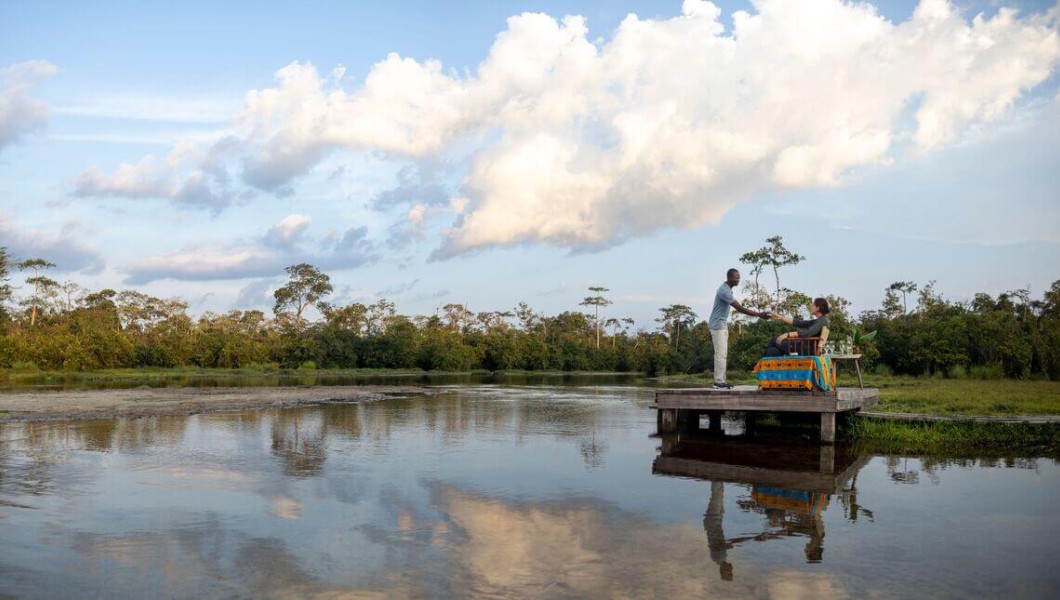
I weave through the dry long grass. A sound of an oxbecker tells us buffaloes are near. We admire a spiny flower mantis perched on a pink marsh flower before moving onto a man-faced stink bug, whose unfortunate name is redeemed by being all colours of the rainbow. A large set of elephant teeth – the size of my arm – blocks our path. Suddenly, a thunderstorm roars overhead, plunging the forest into darkness. We rush back to camp, exhilarated, trying to beat the rain, silk cotton balls swirling in the air. At the edge of the bai, we dodge a herd of buffalo and make it back just in time.
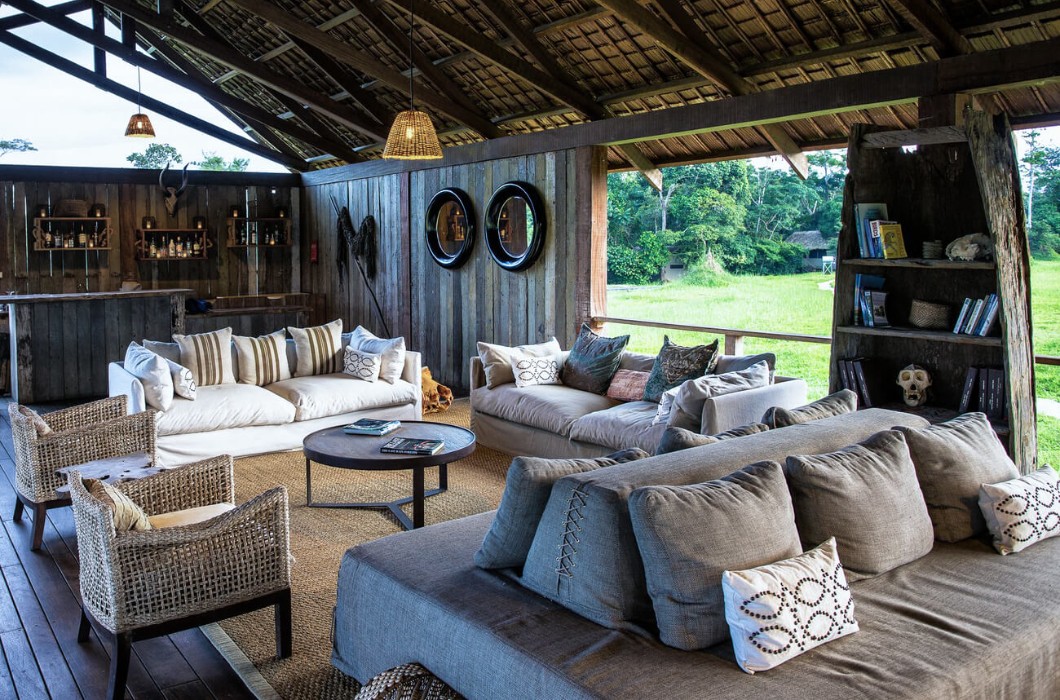
By the following day, the clouds have cleared, a cornflower blue sky greets us. We start the morning searching for hippos. After being eyeballed by the pair of bulbous eyes, we wait a bit, gazing after the trail in the water, before returning to camp. The bai is beginning to fill up with animals. It’s time to head to Kamba’s third lodge, Mboko, 15 minutes away, where elephants, buffalos and hyenas roam at night. We spend sunset on the Lekoli River in a small motorboat. A breeding party of elephants stands on the banks. Lopes wiggles the boat in so we can get a closer look, so close that I see every wrinkle of their skin. They soon smell us, so we putter on, past another elephant dousing itself with water. Then, we happen upon our sight of the night: an elephant mining for minerals on an island, with, thrillingly, a hippo circling. The red African sun begins to burn, we sit back with a drink, in awe at the spellbinding sight.
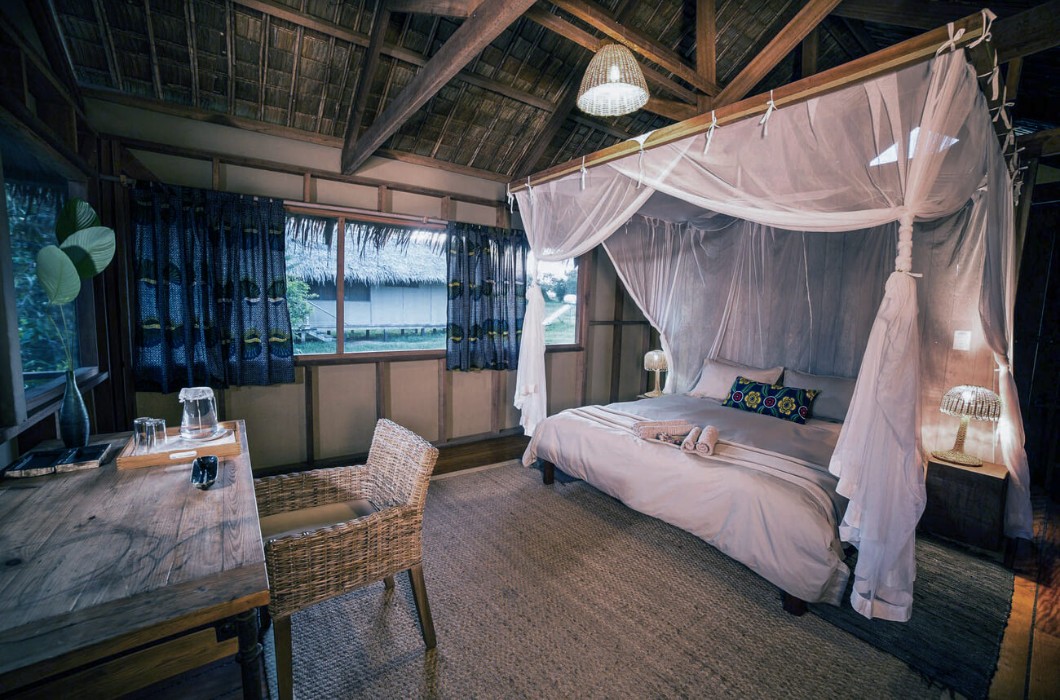
In the morning, the river is a different beast. Plants sit cocooned by huge spider webs. “The river looks more primeval in the morning. It’s like the forest is erupting out of the mist,” says Hay. The sound of Putty Nose monkeys welcomes us, amid frog calls and birds marking their territory. “The birds go nuts in the morning,” says Hay. And they are hard to miss: Green-backed woodpeckers, handsome Hartlaub’s ducks and bright blue Woodland Kingfishers all make their presence known – before a rarely-seen sitatunga, a swamp-dwelling antelope, jumps out directly in front of us. “We’ve seen a winner,” says Lopes. Nature continues to dance around us. Agile grey-cheeked Manga Bey monkeys carpet the ground while De Brazza monkeys swing in the trees, their heads like Chinese emperor hats. Black and white Colobus monkeys emerge as the sun comes up, already burning bright. An African Darter, with its spear-like beak, swims in front of us. We gleefully stop to pick limes from an island before returning home to the chat of sociable Vieillot’s black weavers.
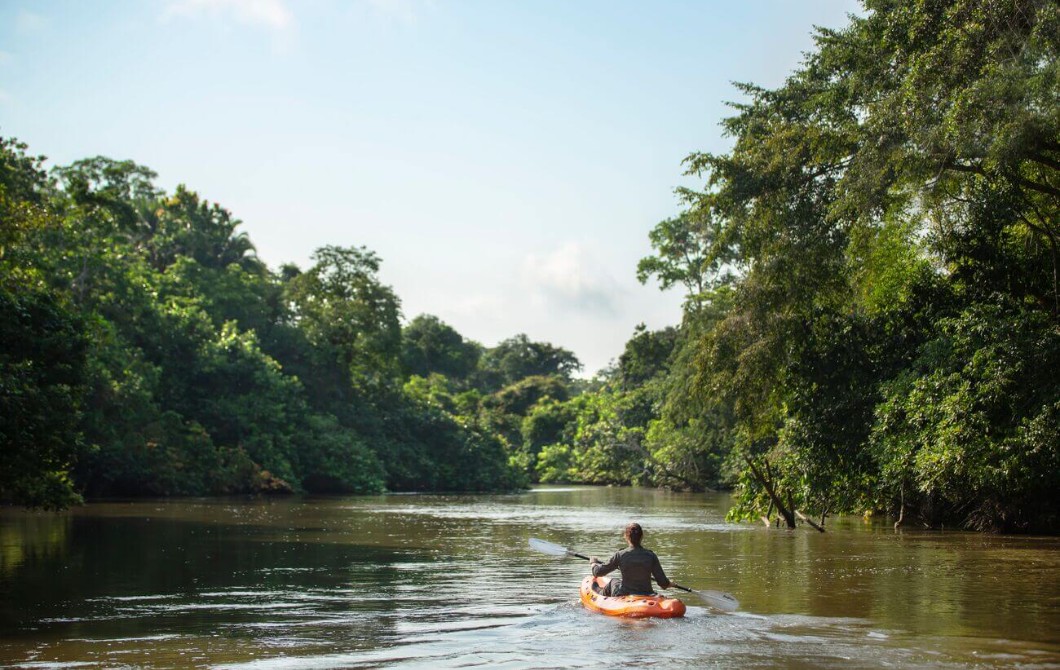
I spend the rest of the day wild swimming in the river, reading and savouring a huge three-course lunch. In the evening, we set off up the Muebe stream, a favourite spot for hippos. Navigating our way through fallen branches, it’s almost eery. “There’s nothing happening but there is everything happening,” says Lopes. The sharp smell of elephants is fresh in the air. The leaves still tremble from passing hippos. Three fish eagles, their bright white chests puffed out with feathers, sit on a triangle of trees and watch us putter home. The next day, I fly back to Brazzaville. Odzala pushes your imagination. A wild Eden which opens your eyes to the true power of nature. An unscripted expedition to experience up close the magnificent beasts that call the jungle home. A journey of a lifetime.
---rhino-africa-62xogi.jpg)
Steppes Travel offers a ten-day holiday exploring Odzala national park in the Congo basin from £13,495 including gorilla permits, park fees, guided safaris and accommodation on a full board basis (breakfast only in Brazzaville). International flights are not included.
